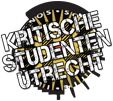 The day of the parliamentary election over the rise in tuition fees. Riots in the capital, open confrontations with the police, looting of shops in the main streets, assault of the public treasury building, Prince Charles and his wife Camilla attacked in a car.
The day of the parliamentary election over the rise in tuition fees. Riots in the capital, open confrontations with the police, looting of shops in the main streets, assault of the public treasury building, Prince Charles and his wife Camilla attacked in a car.
In recent weeks, the crowds have been changing tactics to deal with the police. These tactics include charges on foot, charges on horseback and containing groups of people in small spaces for a long time without letting them out – “police kettles”.* Protesters can already be seen throwing firecrackers to freak out the horses, or creating spear points within the kettles to break the police lines. What’s more, instead of a procession from point A to point B, the crowd is spreading into different groups in order to attack different targets.
Notably, the National Union of Students (NUS)**, who organized transportation and materials for previous events while clearly forming part of the government, was rejected this time. The leader of the NUS has given many interviews denouncing the violence of previous demonstrations and this time the union held an alternative protest – a peaceful candlelit vigil beside the Thames. The word being spread is that “if we do not act violently, if not break things, they are not going to listen.”
The protest is already moving away from its official reason (rise in tuition fees for students from universities, disappearance of state benefits for high school students). Now protesters are attacking targets such as Topshop and Vodaphone (for avoiding their taxes) and the car carrying Charles and Camilla (who represent the wealthy elite).
One can also see hints of what is happening in Europe in the British protests. Pamphlets distributed in UCL (the uni. London’s largest) to announce the demo said “Block the City” – the phrase adopted in France and Italy. The “Book Bloc” has also travelled to the British capital:
http://www.indymedia.org.uk/en/2010/12/470228.html
http://www.guardian.co.uk/education/gallery/2010/dec/09/student-protests-photos-london?picture=369571534#/?picture=369571536&index=3
The repression has been brutal and a protester had a brain hemorrhage after being hit on the head, he is now well. There were also horseback charges against trapped students:
There is a notable difference between university students, usually middle class, uni-educated, behaving more or less well, and youths – many from poor neighborhoods to the south and east of the city, members of street gangs rather than activists, who are confronting the police and taking on the role of instigating action.
Some videos:
http://www.bbc.co.uk/news/education-11954333
Finally, there are about 22 universities occupied across the country, as well as other demos, there are also alternative unis, meetings, chats, etc. Each newspaper has news of the students and people are speaking about the events in all sorts of places, the Metro on Friday read “Anarchy in the UK.” It might be that next week none of this remains, or maybe not.
* So far, no tear gas or flashbulbs used but amongst the 4000 police in the streets of London on Thursday there were guns (Heckler & Koch MP5) – present, if not used.
** Every British university has a “Student Union” that organises social nights, social clubs, cafes, bars etc. Union membership and NUS membership is automatic for all students.


Pingback: Fotoserie van de protesten in Londen « Kritische Studenten Utrecht | 2010